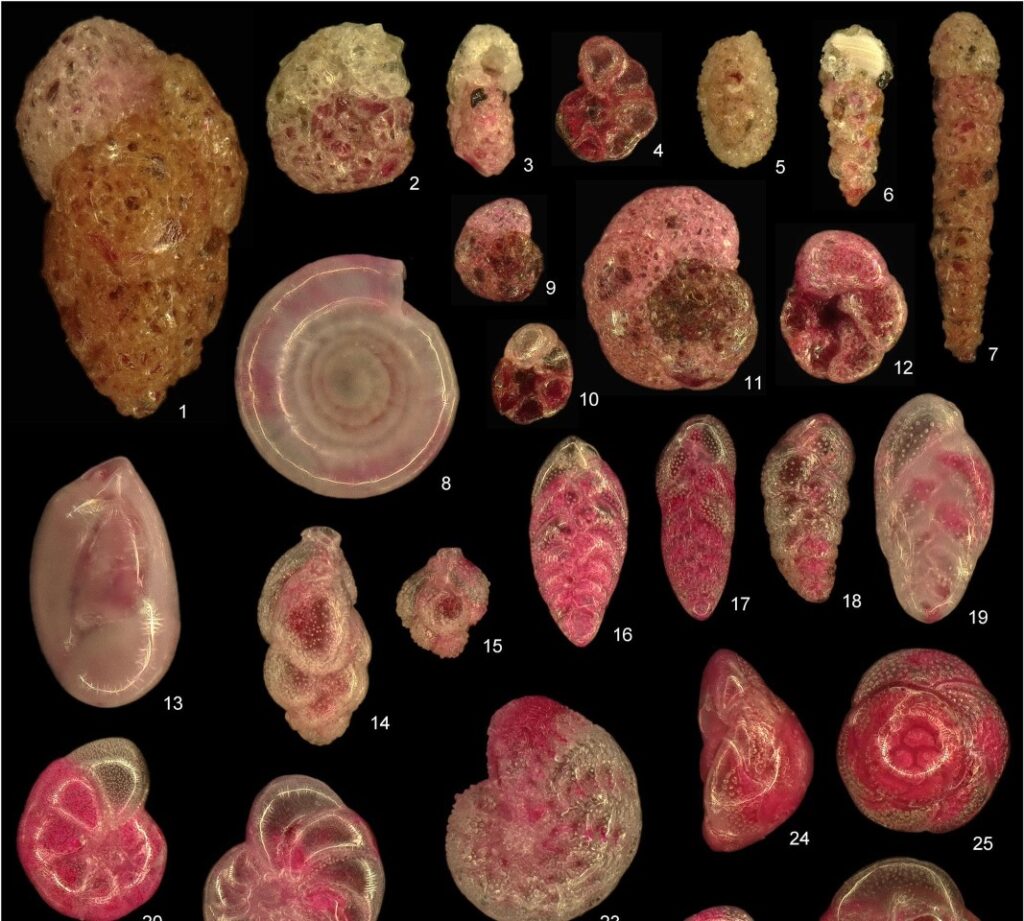Isabel Mendes, researcher at the Center for Marine and Environmental Research (CIMA) of the University of Algarve, is the co-author of a scientific study that will help to better understand benthic foraminifera, microorganisms that can help to understand in advance the impact of environmental disturbances will have in the fauna of the Ria Formosa.
The Algarve researcher, in collaboration with Joachim Schönfeld, researcher at the Helmholtz Center for Ocean Research (Geomar), in Germany, have just completed post an article whose objective “is to deepen the knowledge about the response pattern of benthic foraminifera (micro-organisms that live on the ocean floor on or within the sediment) to environmental disturbances”.
«The study was carried out based on the annual monitoring of these microorganisms, which can be understood as a “tool” species in environmental monitoring work», according to UAlg.
“The authors of this article demonstrated that foraminifera are very sensitive indicators to environmental disturbances and respond more quickly than larger invertebrate animals that live in the same area”, explains the institution.
Since 2013, explains Isabel Mendes, «a monitoring was carried out in the area near the access bridge to Praia de Faro, in the inner beach area, next to Esteiro Ancão. A 45-metre long transept was defined, where every year (between the end of April and beginning of May) detailed descriptions of the site were made, which included, among others, the composition of the sediment, presence and identification of organisms and topographic surveys were carried out» .
In this profile, concludes the researcher, "surface sediment samples were collected to analyze the benthic foraminifera fauna and measurements of water temperature, salinity, currents and tidal levels near the area in question were also carried out".
On the other hand, in 2015, the replacement of the Ancão bar and the opening of ducts in the access to Praia de Faro, in the winter of 2015, «triggered a rapid response in the abundance and density of benthic foraminifera, identifying them as powerful environmental indicators».
This study «demonstrates that the interventions made by men in the Ria Formosa, namely the replacement of the Ancão bar and the opening of the ducts made in the access to Praia de Faro, trigger changes in the fauna of the Ria, namely in the abundance and diversity of benthic foraminifera, which are very sensitive indicators to environmental disturbances».
The discoveries made by the pair of researchers become
Research “becomes very relevant not only for the scientific community, but also for local managers and the general public, to quickly assess environmental variations and for more accurate monitoring studies”.
«The Ria Formosa has been intensively studied by researchers from the University of Algarve and aroused the interest of many others, both nationally and internationally. However, foraminifera have been forgotten in biological studies in this area. However, this group of organisms deserves special attention, since since the end of the year 2000 they have become increasingly important as environmental indicators», illustrated the UAlg.
The article is available here.



















Comments